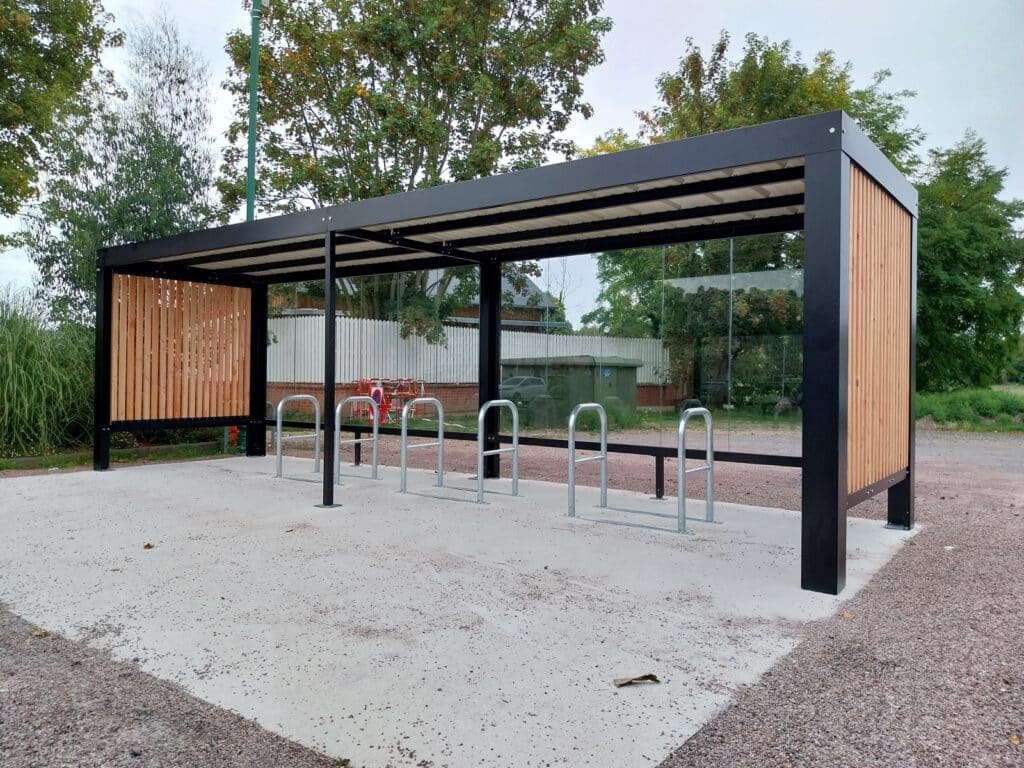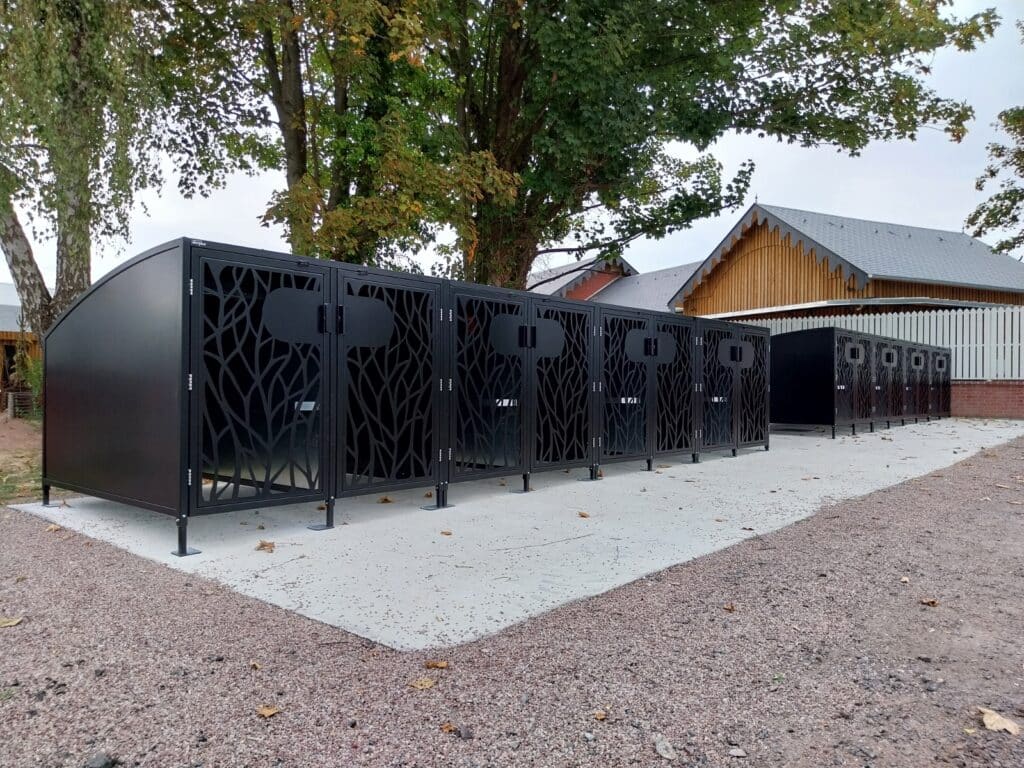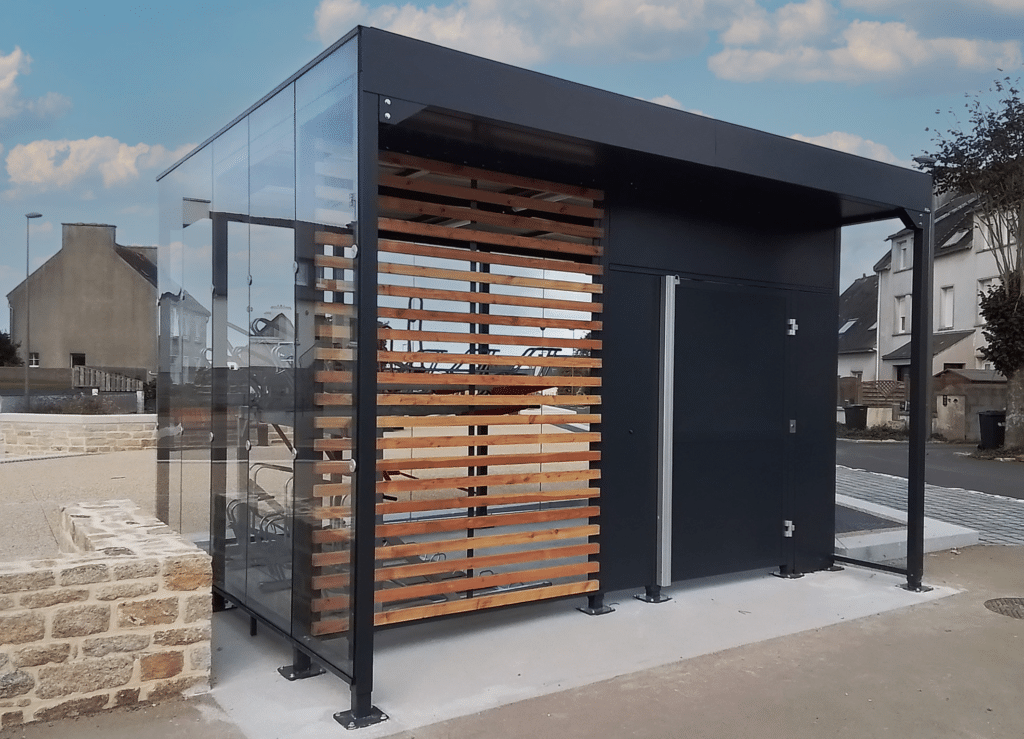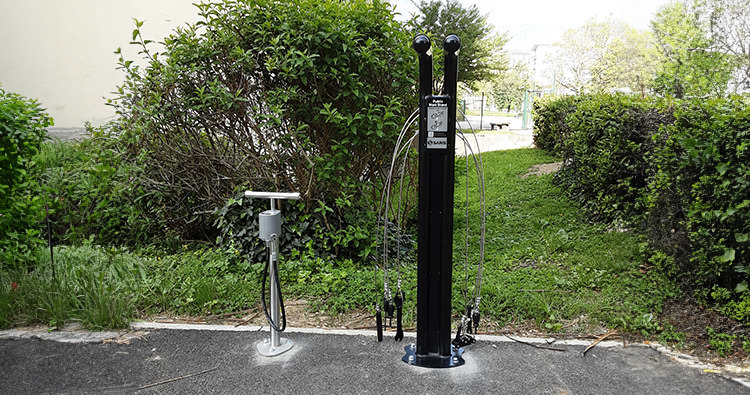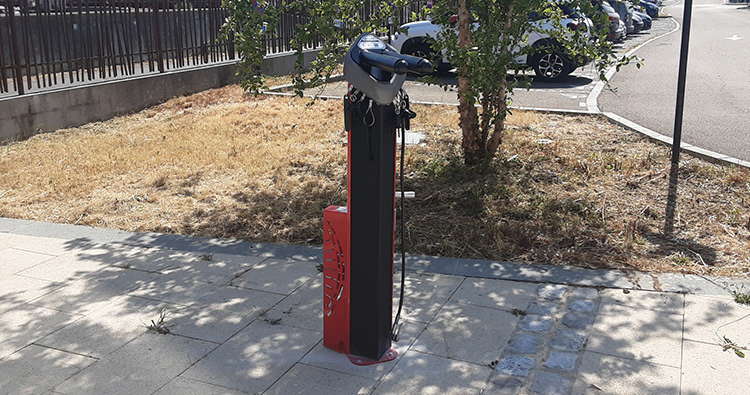Rural areas and sparsely populated areas: go for cycling
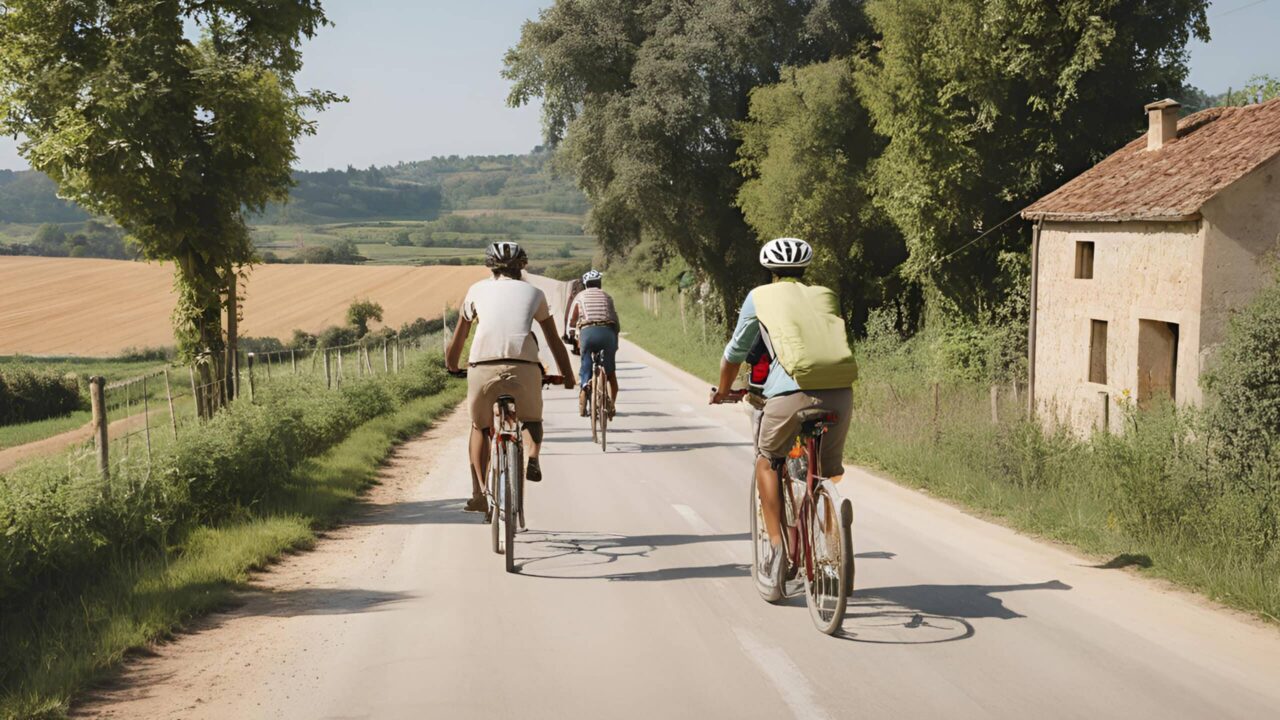
Long seen as essential in sparsely populated areas, the private car is no longer the only option for getting around the countryside.
Yet even today, in rural France, the majority of journeys are made by car. Take home-to-work journeys, for example. According to a survey by the French Ministry of Ecological Transition, 74% of these journeys are made by car. While this proportion is already high, it is even higher in rural areas, where 87% of residents use the car to get to work! These statistics can be explained by the particular characteristics of these often vast, scattered and sometimes isolated territories. These figures also reflect a lack of suitable infrastructure and resources to encourage soft mobility.
And yet, with the right facilities, cycling can become a more practical and environmentally-friendly alternative. Data from the Observatoire Vélo & Territoires reveals that rural ridership increased punctually in 2023, with a peak in May(+5%) due to cycling-friendly weather.
So how can we make room for soft mobility in these areas where the car takes up all the space?
Safe driving: mission impossible?
Developing rural areas to encourage the deployment of soft mobility raises a number of issues, particularly in terms of safety for cyclists, due to the difficulties associated with sharing the roadway. The absence of dedicated cycle paths increases the risk of accidents, as in many rural areas, road infrastructures are not adapted to the safe cohabitation of these modes of transport.
What’s more, the low population density of rural areas makes it difficult to set up suitable infrastructure for soft mobility. Long distances between villages, shops and services limit the appeal of cycling as a viable alternative to motorized transport. This low population density can therefore limit the use and effectiveness of these infrastructures.
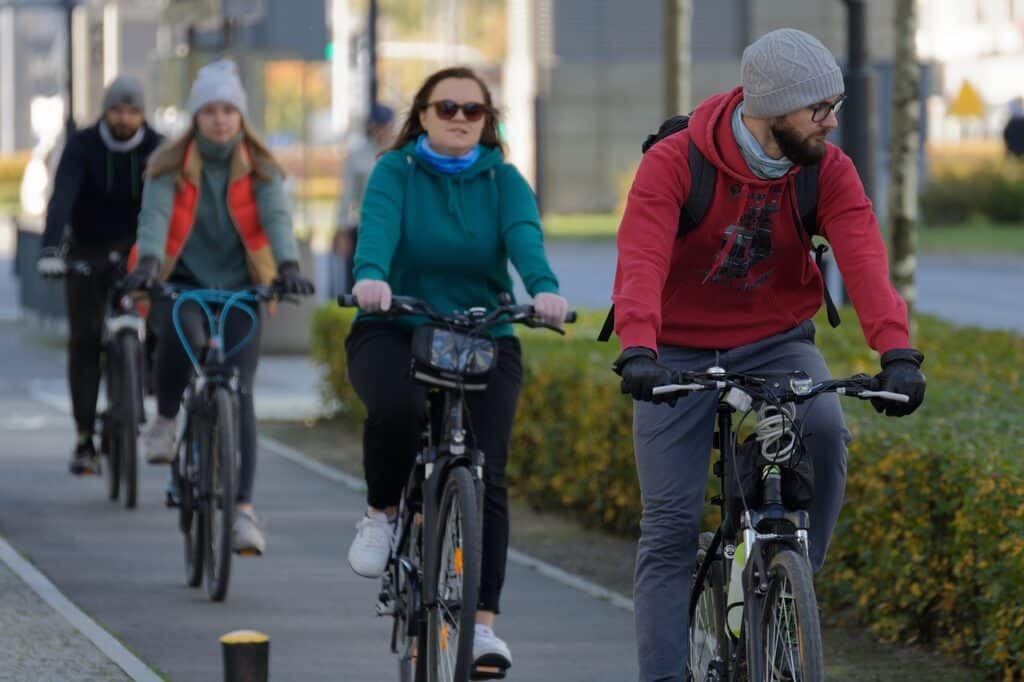
Why bicycles could transform rural areas
Yet promoting soft mobility in these areas would bring many benefits:
- A reduction in noise pollution associated with the use of combustion-powered cars
- A calmer space that promotes a more serene and pleasant living environment for residents
- A local economy stimulated by short journeys, making it easier to stop off at small shops.
- Increased tourist appeal thanks to the development of cycle paths and bicycle tourism
Of course, cycling also helps to reduce greenhouse gas emissions and therefore contributes to improving air quality, which represents a significant environmental impact.
Creating the right infrastructure
In order to encourage residents to adopt soft modes of transport, it is essential to rethink the layout of communities and design appropriate infrastructures to guarantee user safety.
The creation of bicycle lanes and parking spaces contributes directly to promoting cycling. The main objective: to reduce the risk of accidents by effectively separating traffic flows in the busiest areas.
In very sparsely populated areas, it is of course unrealistic to develop all the roads. The important thing is to study needs and prioritize the development of strategic routes: between town centers and main residential areas, railway stations, places of tourist interest…
With the creation of cycle paths, it is necessary to provide parking spaces along these routes.
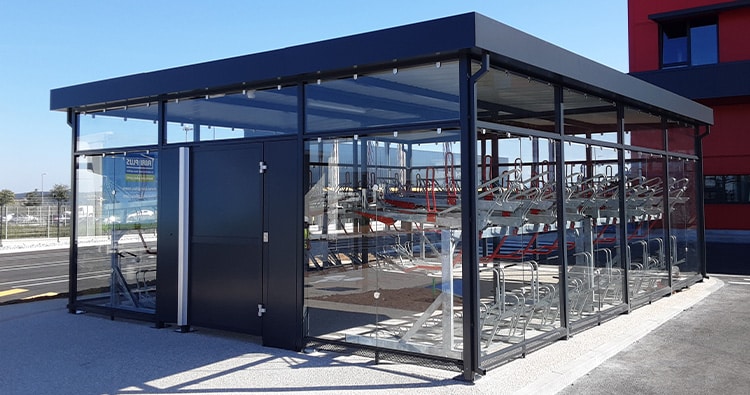
Which bike shelters are right for sparsely populated areas?
- Thanks to its compact size,the bike locker is the box we sell most outside the big cities! In fact, they’re the best solution for promoting multimodality at bus stops, for example, or along greenways. Easy to access, they can be used in rural areas with secure equipment that can be used with a padlock or anti-theft device. With its small capacity and individual format, it’s ideal for light use.
- Open shelters are best suited to towns, near shops and schools. They are distinguished by their accessibility and ease of use. These shelters encourage the daily use of bicycles, particularly for local trips.
- In high-density areas, such as multimodal hubs or railway stations, however, secure bicycle shelters are the preferred choice for optimum protection. Equipped with locking devices, such as keys or electronic badges, these shelters offer the enhanced security required in high-traffic areas. They are also designed for long-term parking, enabling users to combine their bicycle journey with other means of transport, such as the train or bus.
At Abriplus, we manufacture open, secure bicycle shelters, offering a wide variety of finishes, such as wood, glass or sheet metal. Each shelter can be fitted with bollards or racks to optimize parking for a large number of bikes.
Boost bicycle use!
To further encourage the use of bicycles, local authorities can adopt a number of measures to encourage their residents to opt for this mode of transport.
- Financial assistance: Encourage local companies to sign up to programs such as the “sustainable mobility package” for their employees, by offering subsidies or grants to install dedicated bicycle infrastructure within the company. Financial assistance is also available for the purchase of an electric bike, with amounts varying according to your situation. For individuals, assistance ranges from 300 euros to 2,000 euros, depending on income level. Legal entities, such as companies, local authorities and associations, receive a minimum of 1,000 euros.
- Raising awareness: Organize campaigns to promote the benefits of cycling, and offer training workshops to get young and old up to speed. These campaigns can take the form of bike rides or dedicated days when local residents are invited to try out cycling. These educational initiatives can also include partnerships with schools to integrate cycling education programs, encouraging the younger generation to familiarize themselves with cycling from an early age. Repair workshops can also be set up to introduce cyclists to the essential tools for bicycle maintenance and use. At Abriplus, our Deluxe repair station offers a space perfectly suited to these workshops.
- Regulations: Creating car-free pedestrian zones can boost cycling by making it more attractive and safer. These zones can also encourage cohabitation between pedestrians and cyclists, limiting car traffic and reducing noise and air pollution. In some towns, for example, streets are transformed into pedestrian and cycling zones on Sundays.
A future on two wheels?
Promoting cycling in rural areas offers many advantages, including reduced pollution, improved health and local development. By transforming these areas with appropriate infrastructure, such as the creation of cycle paths and the installation of bicycle shelters, residents will be able to change their habits and encourage the use of bicycles.
Share this article
